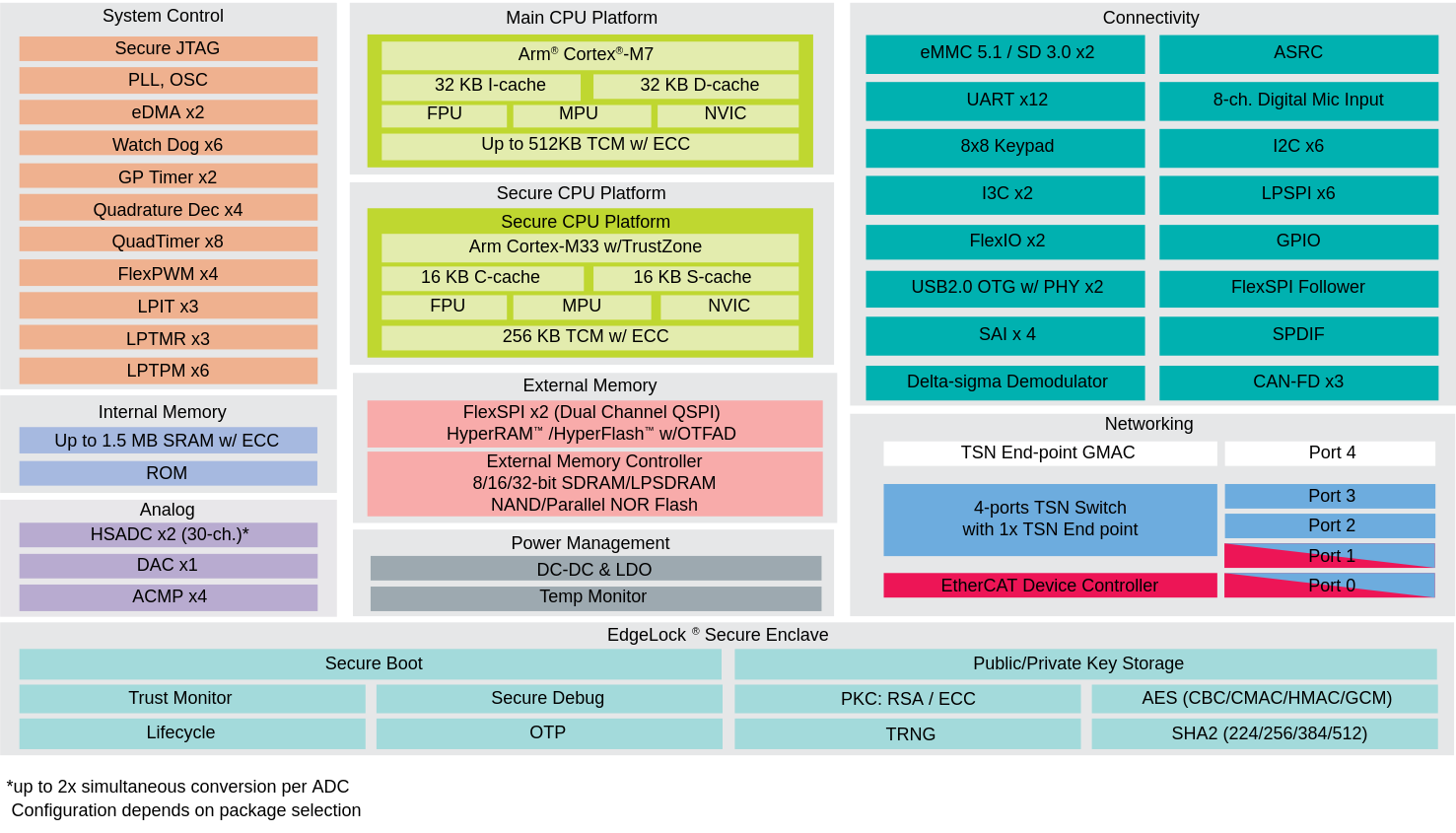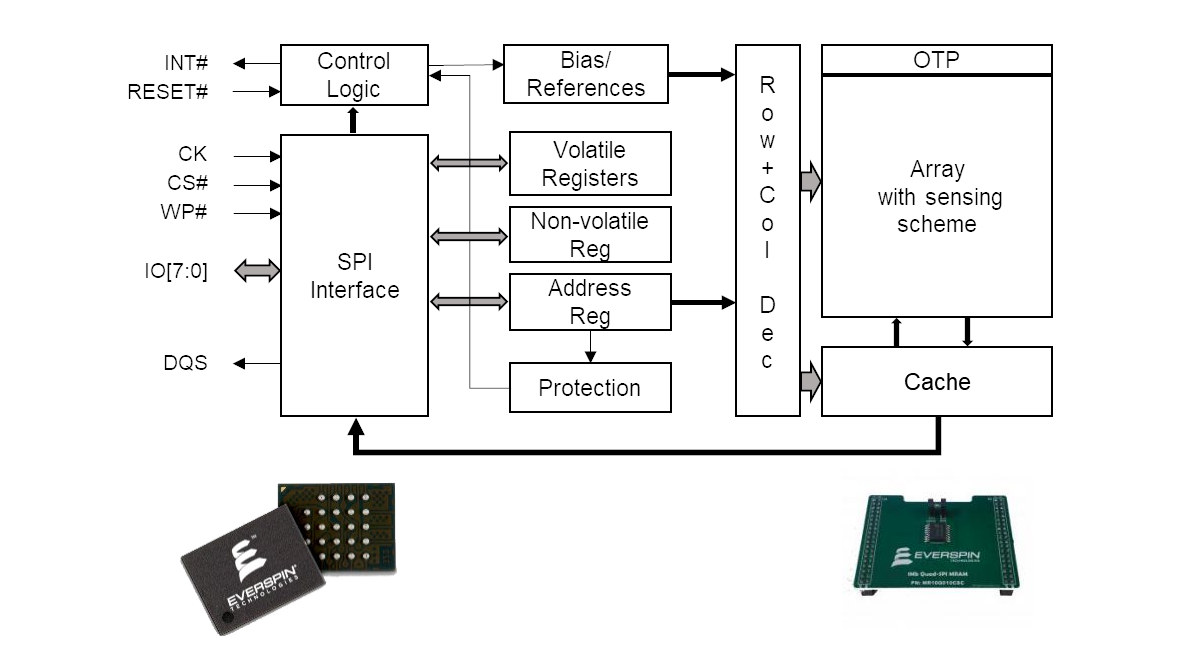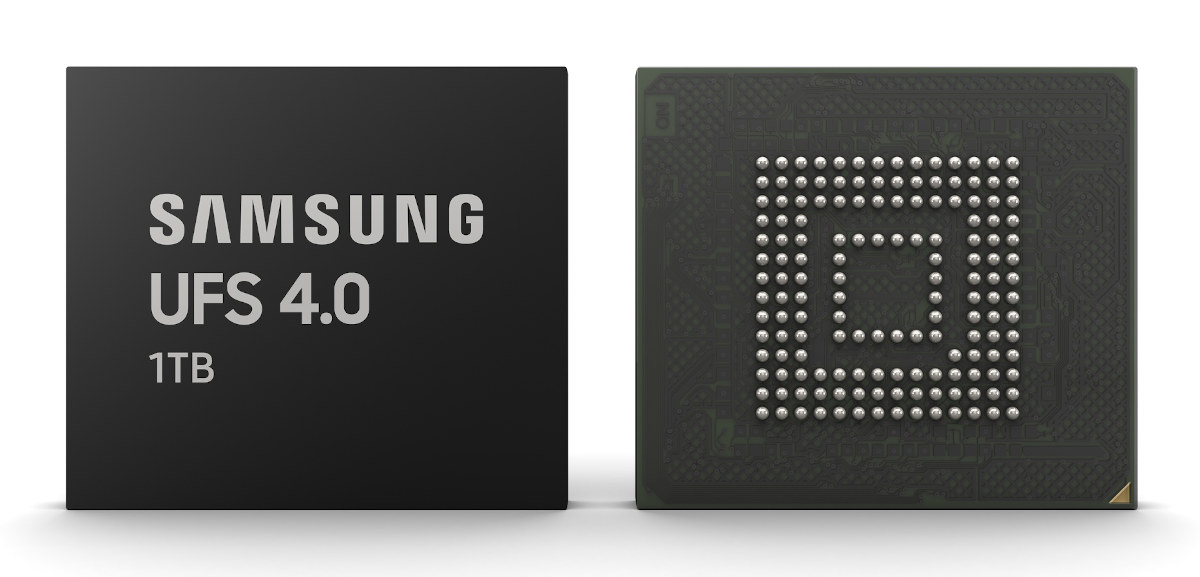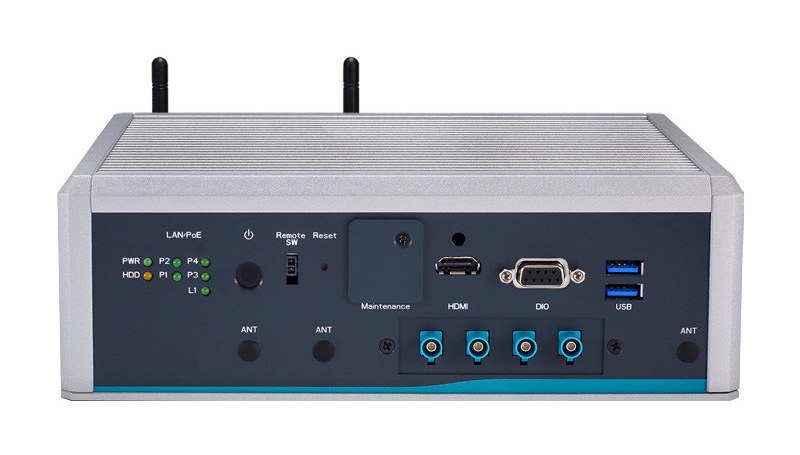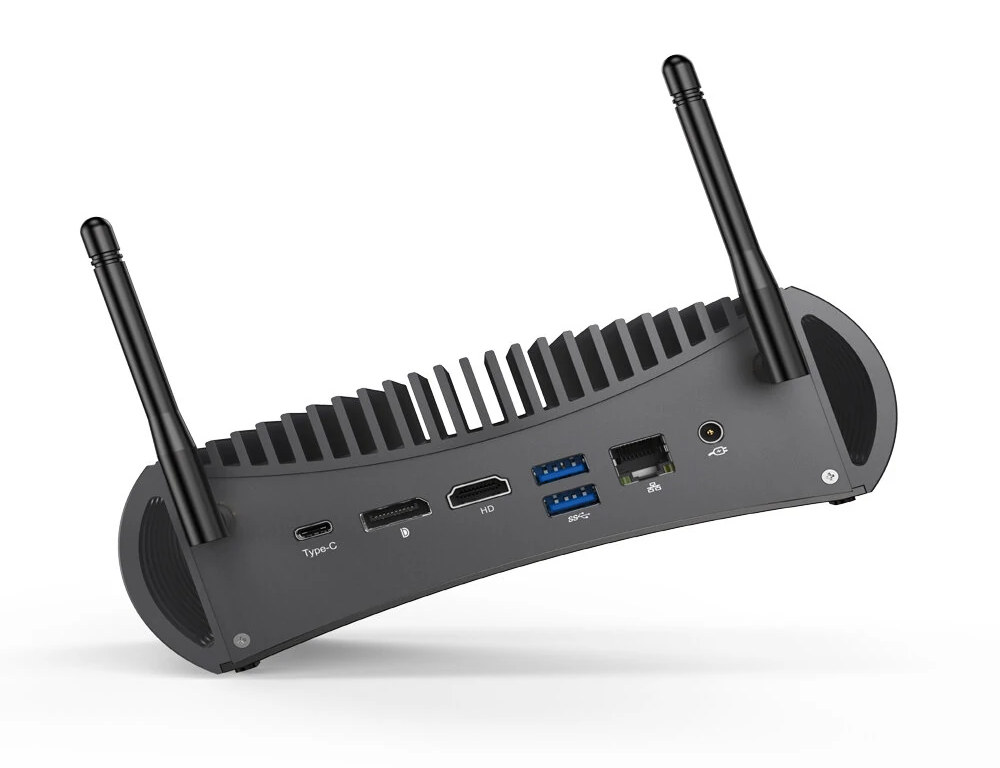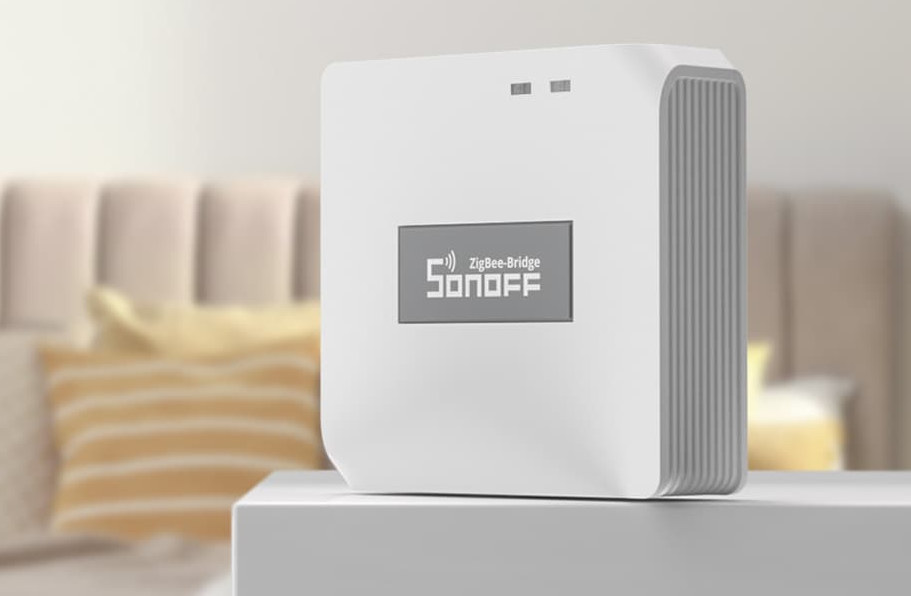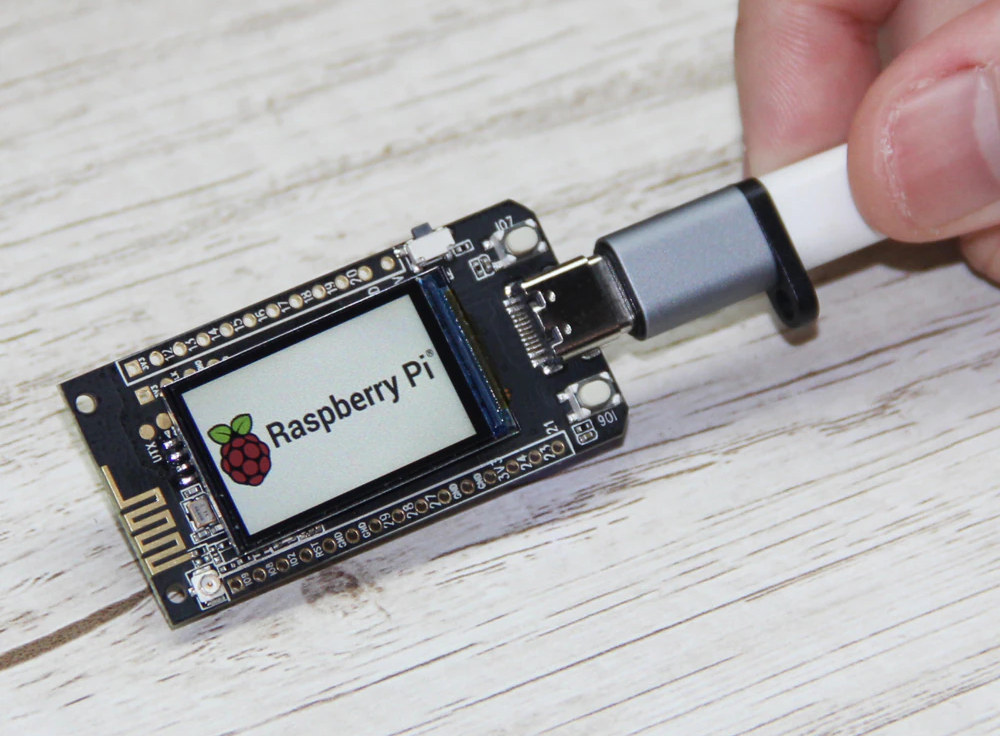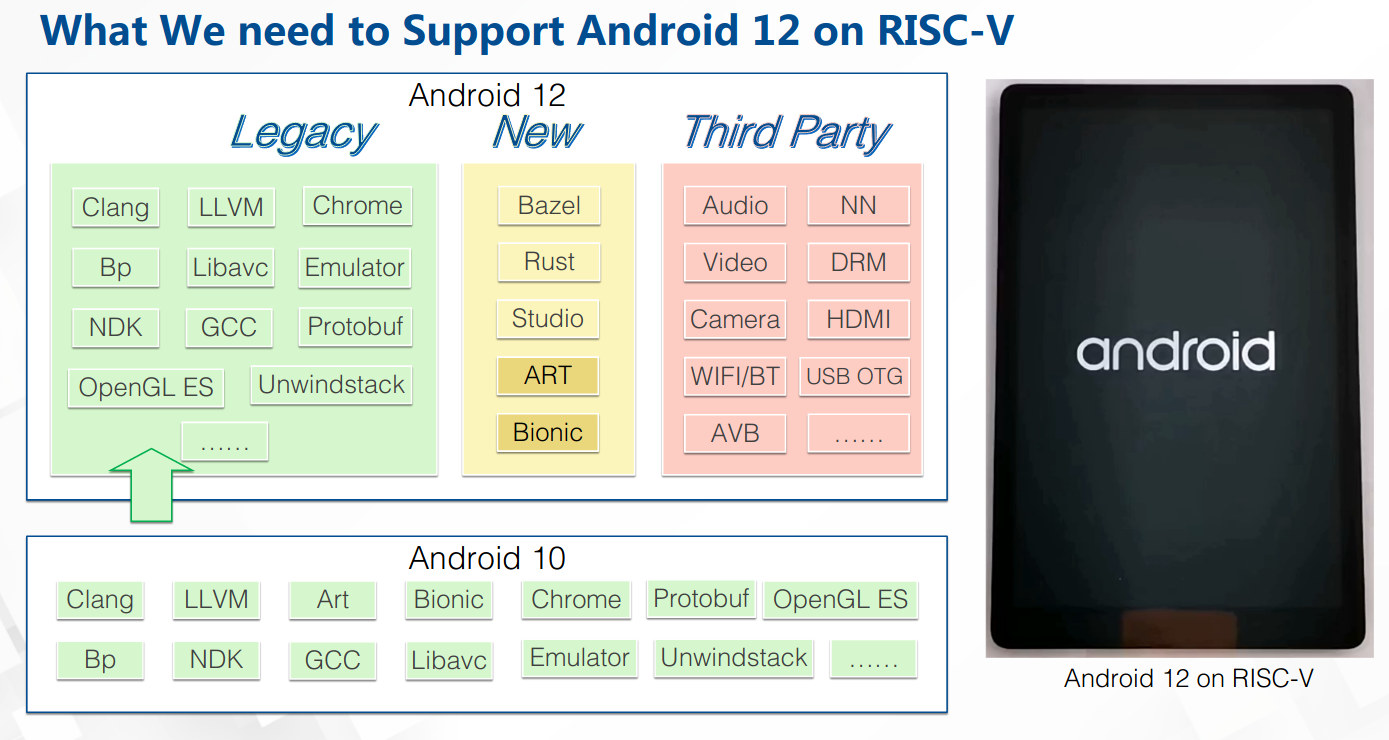NXP i.MX RT1180 is the latest member of the company’s i.MX RT Series crossover MCUss with application processor-like performance. The 800 MHz dual-core Arm Cortex-M7/M33 microcontroller is specifically designed for industrial IoT communication with a Gigabit Ethernet port supporting time-sensitive networking (TSN). NXP also highlights that it is the first crossover MCU to include an EdgeLock secure enclave that “eases the complexity of implementing robust, system-wide security intelligence for industrial IoT applications”, and the new processor aims to bridge the gap between existing industrial systems and Industry 4.0 system. NXP i.MX RT1180 key features and specifications: CPUs – Arm Cortex-M7 @ 800 MHz + Arm Cortex-M33 @ 240 MHz (Optional: single-core Arm Cortex-M33) On-chip Memory – Up to 1.5 MB SRAM (ECC protected) with 512 KB of TCM for Cortex-M7 and 256 KB of TCM for Cortex-M33 Memory & Storage I/F – 2x FlexSPI for HyperRAM or HyperFlash 8/16/32-bit SDRAM/LPSDRAM […]
xSPI MRAM provides an alternative to SPI NOR/NAND flash with up to 400MB/s R/W bandwidth
Everspin has unveiled the EMxxLX xSPI MRAM (Magnetoresistive Random Access Memory) non-volatile memory solution for industrial IoT and embedded systems providing an alternative to SPI NOR/NAND flash with much faster R/W data rates of up to 400MB/s and densities between 8Mbit and 64Mbit. The higher speed is made possible by the new JEDEC expanded Serial Peripheral Interface (xSPI) standard interface and a clock frequency of up to 200 MHz, the maximum supported by the xSPI standard. All chips operate at 1.8V, and the family is offered in 24-ball BGA and 8-pin DFN packages. EMxxLX xSPI MRAM key features and specifications: Density – 8Mb, 16Mb, 32Mb, 64Mb 400MBps sustained throughput with OSPI at 200MHz, DTR, for reads and writes Expanded SPI (xSPI) bus interface supporting Octal, Quad, Dual, and Single SPI protocol Up to 200MHz single and double transfer rate (STR/DTR) for Octal SPI Up to 133MHz, SPI, DSPI, QSPI Data […]
Samsung UFS 4.0 storage to offer up to 4,200 MB/s read speeds, 1TB capacity
Samsung Electronics has unveiled its first Universal Flash Storage (UFS) 4.0 solution based on the company’s 7th-generation V-NAND and a proprietary controller allowing speeds of up to 23.2 gigabits per second (Gbps) per lane or double the previous UFS 3.1 solutions. In more practical terms, Samsung UFS 4.0 storage will deliver a sequential read speed of up to 4,200 MB/s and a sequential write speed of 2,800 MB/s, corresponding to about 2x and 1.6x faster speeds over UFS 3.1 storage. Samsung also claims that power efficiency has been enhanced with a sequential read speed of up to 6.0 MB/s per milliampere (mA), or about a 46-percent improvement over UFS 3.1. An advanced Replay Protected Memory Block (RPMB) is integrated into the chip to store important personal data that can only be read or written through authenticated access, and whose design is said to be 1.8 times more efficient. Samsung UFS […]
Axiomtek AIE900-XNX – A 5G connected fanless Edge AI system for AMR, AGV, and computer vision
Axiomtek AIE900-XNX is a fanless Edge AI computing system powered by NVIDIA Jetson Xavier NX system-on-module designed for autonomous mobile robots (AMR), automated guided vehicles (AGV), and other computer vision applications. The system delivers up to 21 TOPS thanks to the 6-core NVIDIA Carmel ARM v8.2 (64-bit) processor, NVDLA accelerators, and 384-core NVIDIA Volta architecture GPU found in the Jetson Xavier NX module. The AIE900-XNX Edge AI computer also comes with a 5G module for high-speed cellular connectivity and supports SerDes, PoE, and MIPI CSI cameras for video processing. Axiomtek AIE900-XNX specifications: NVIDIA Jetson Xavier NX system-on-module with CPU – 6-core NVIDIA Carmel Armv8.2 64-bit CPU with 6 MB L2 + 4 MB L3 cache GPU – 384-core NVIDIA Volta GPU with 48 Tensor Cores AI Accelerator – 2x NVDLA System Memory – 8GB 128-bit LPDDR4x onboard Storage – 16GB eMMC flash Storage – M.2 Key M 2280 with PCIe […]
NVISEN FU01 is a fanless Tiger Lake mini PC with a Thunderbolt 4 port
NVISEN FU01 fanless mini PC is offered with a choice of Intel Core i3/i5/i7 Tiger Lake processors, fitted with up to 16GB RAM (upgradeable to 64GB), a 256GB or 512GB M.2 NVMe SSD, and the highlight of the computer is its 40Gbps Thunderbolt 4 port with 8K video output support. The Tiger Lake system can drive up to three 4K displays with HDMI 2.0 and DisplayPort connectors adding to the Thunderbolt 4 port, offers Gigabit Ethernet and WiFi 5 connectivity, plus six USB 3.0/2.0 Type-A ports for expansion. NVISEN FU01 specifications: SoC (one or the other) Intel Core i3-1115G4 dual-core processor @ 3.0GHz, up to 4.1GHz (Turbo) with Intel UHD graphics; 28W TDP Intel Core i5-1135G7 quad-core processor @ 2.4GHz, up to 4.2GHz (Turbo) with Intel Xe graphics; 28W TDP Intel Core i7-1165G7 quad-core processor @ 2.8GHz, up to 4.7GHz (Turbo) with Intel Xe graphics; 28W TDP System Memory & […]
SONOFF Zigbee Bridge Pro gateway supports up to 128 sub-devices
ITEAD has just introduced the SONOFF Zigbee Bridge Pro WiFi <-> Zigbee gateway as an upgrade to the Sonoff ZBBridge gateway launched in 2020. Both devices look exactly the same, and the changes are under the hood with the EFR32MG21 and ESP8266/ESP8285 combo being replaced by Texas Instruments SimpleLink CC2652P and ESP32 chips to boost the number of supported sub-devices from 32 to 128. Other changes include the addition of a buzzer acting as an alarm or doorbell chime, as well as a “built-in high-precision local RTC” for gateway time synchronization of local scene schedules. SONFF Zigbee Bridge Pro (aka ZB Bridge-P) specifications: Wireless MCUs Texas Instruments CC2652P SimpleLink Arm Cortex-M4F multiprotocol 2.4 GHz wireless MCU with integrated power amplifier Espressif Systems ESP32-DOWN-V3 dual-core processor with WiFi 4 and Bluetooth LE Wireless Connectivity – 2.4 GHz 802.11b/g/n WiFi 4 and Zigbee 3.0 Supports for up to 128 sub-devices Support for […]
LilyGO T-PicoC3 board merges RP2040 & ESP32-C3, integrates color display
LilyGO T-PicoC3 is a small development board combining Raspberry Pi RP2040 dual-core microcontroller with ESP32-C3 RISC-V MCU to add WiFi and Bluetooth LE connectivity and adds a 1.14-inch color display to the mix, plus several I/Os. We had previously other designs merging ESP32 and RP2040 with UDOO KEY, Arduino Nano RP2040 Connect, or the Pico Wireless Pack among others, but as far as I know, the T-PicoC3 board is the first to use Raspberry Pi RP2040 and ESP32-C3 RISC-V processor. LilyGO T-Pico3 specifications: Microcontrollers Raspberry Pi RP2040 dual-core Cortex-M0+ MCU with 264 KB of embedded SRAM Espressif Systems ESP32-C3 RISC-V processor with WiFi 4 and Bluetooth 5.0 LE connectivity Storage – 4MB SPI flash connected to RP2040 Display – 1.14-inch full-color IPS LCD Display (ST7789V SPI controller) with 240 x 135 resolution USB – USB Type-C port for power and programming (RP2040 / ESP32-C3) Expansion – 15-pin + 12-pin expansion […]
Android RISC-V progress update, emulator support, and roadmap to 2023
We’ve first covered Alibaba T-Head work on Android 10 for RISC-V in January 2021, and later that year they started selling the T-Head RVB-ICE dual-core RISC-V board with GPU for software development. The company has now provided an update for Android 12 RISC-V port, instructions to build Android RISC-V to run it in an emulator, as well as a 2022-2023 roadmap. Alibaba T-head is working on hardware platforms, which appears to be similar to T-Head RVB-ICE board, with the following minimal specifications: CPU – At least Dual-core XuanTie C910 (rv64imafdcv) processor GPU – Compatible with OpenGL ES and OpenCL VPU – HW Video/Picture codec Neural Network Accelerator System Memory – 4GB or more DDR Memory Display – MIPI/HDMI Audio – Multi-Channel Audio output & input Camera – ISP with support for multiple MIPI CSI lanes USB interface(s) They built upon the work done on Android 10 to add support for […]


